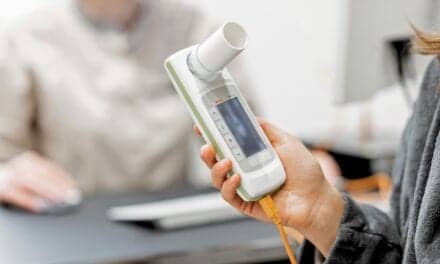In children who are overweight or obese experiencing a severe allergic reaction, epinephrine delivered via an automatic injection device should be injected into the child’s lower thigh to ensure the medication is administered intramuscularly, according to research presented at the American Academy of Allergy, Asthma and Immunology’s annual meeting in San Antonio. In extremely obese children, the recommendation is to inject the medication into the calf.
“Delivering epinephrine into the muscle allows for more rapid absorption and leads to higher blood levels than if it’s injected into the overlying fat,” said study lead author Peter Arkwright, MD, PhD, FAAAAI of University of Manchester, Manchester, UK. “Considering the rising obesity rates in children, there is concern that epinephrine autoinjectors will not adequately deliver the medication in overweight children who may be experiencing anaphylaxis.”
Researchers employed ultrasound to take skin surface-to-muscle depth measurements at set distances down the thighs and legs of 93 children. Weight, height and waist circumference were also measured and BMI calculated.
The data linked higher weight and waist circumference to a skin surface-to-muscle depth measurement greater than the length of an auto-injector needle. In 82% of the obese children, a quart of the way down the thigh, the skin surface-to-muscle depth was greater than needle length; this was found in only 25% of non-obese children.
Further down the thigh, roughly three-quarters of its length, only 17% of obese and 2% of non-obese children had skin surface-to-muscle depth measurement greater than the length of an auto-injector needle.
“Based on our study, injecting epinephrine into the lower rather than upper thigh would be advised in overweight or obese children,” said Arkwright. “If a child is experiencing anaphylaxis, this information would be important for a care giver to know so that epinephrine can be administered into the child’s muscle in the most effective way.”









